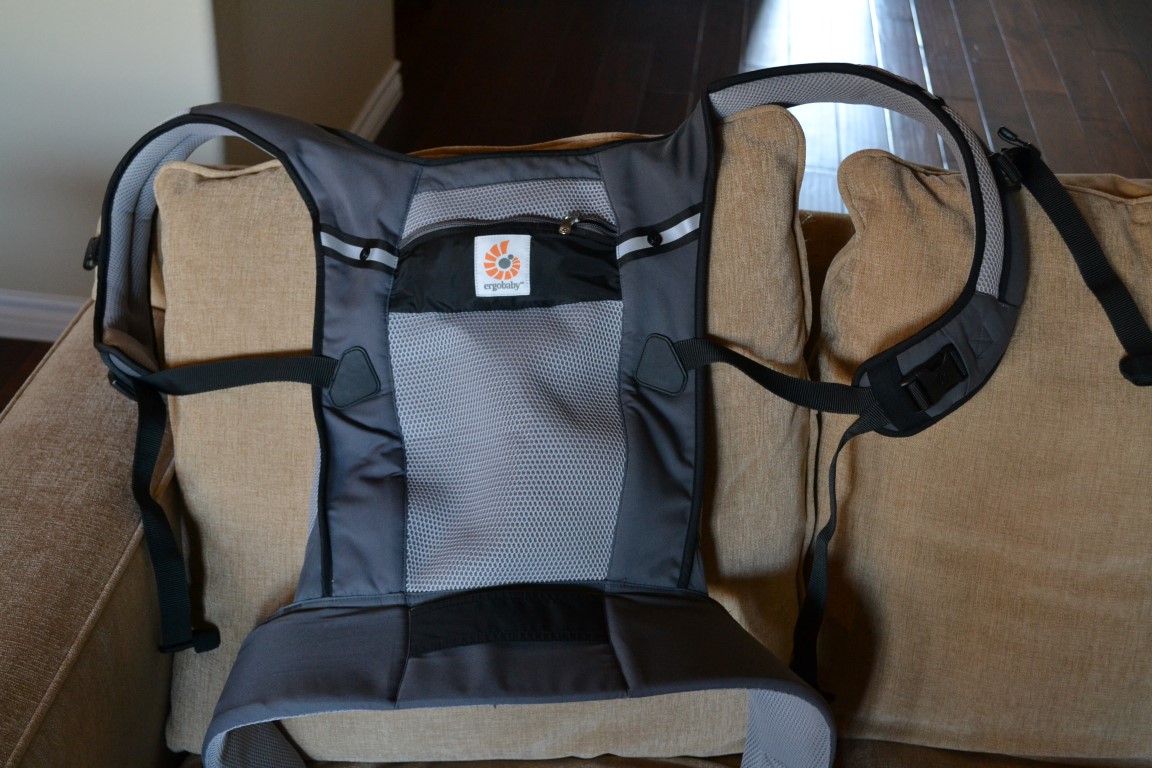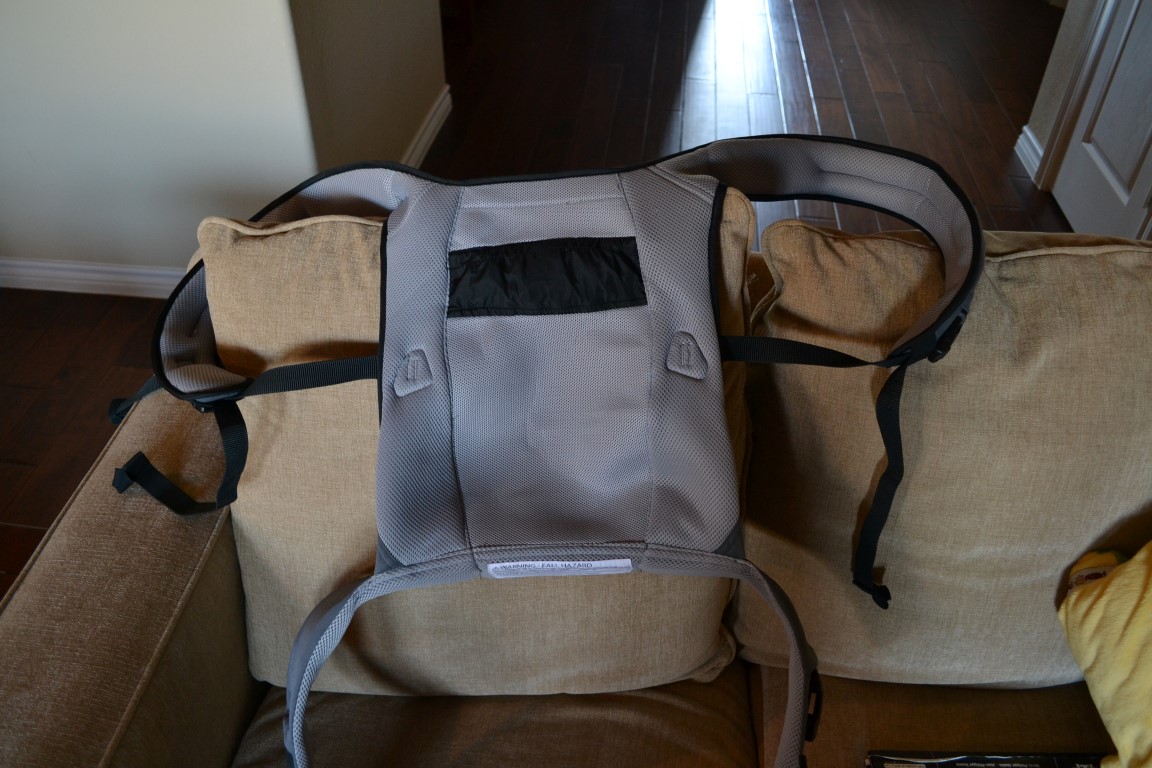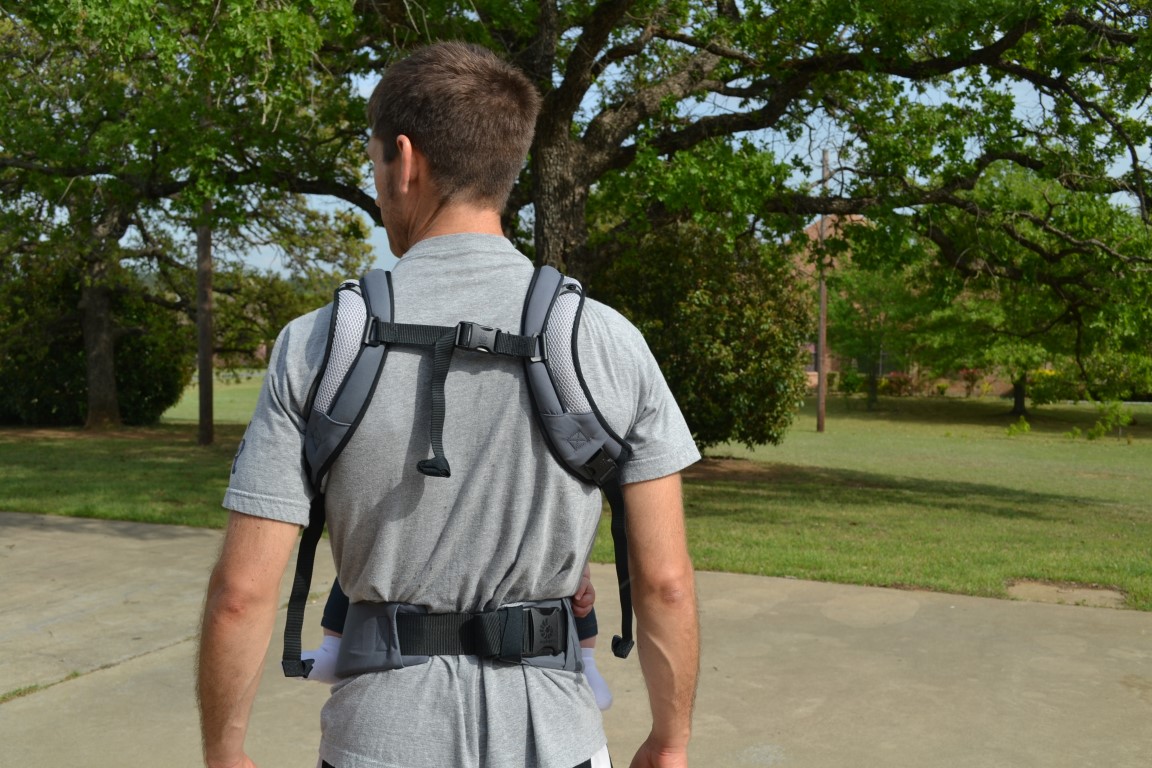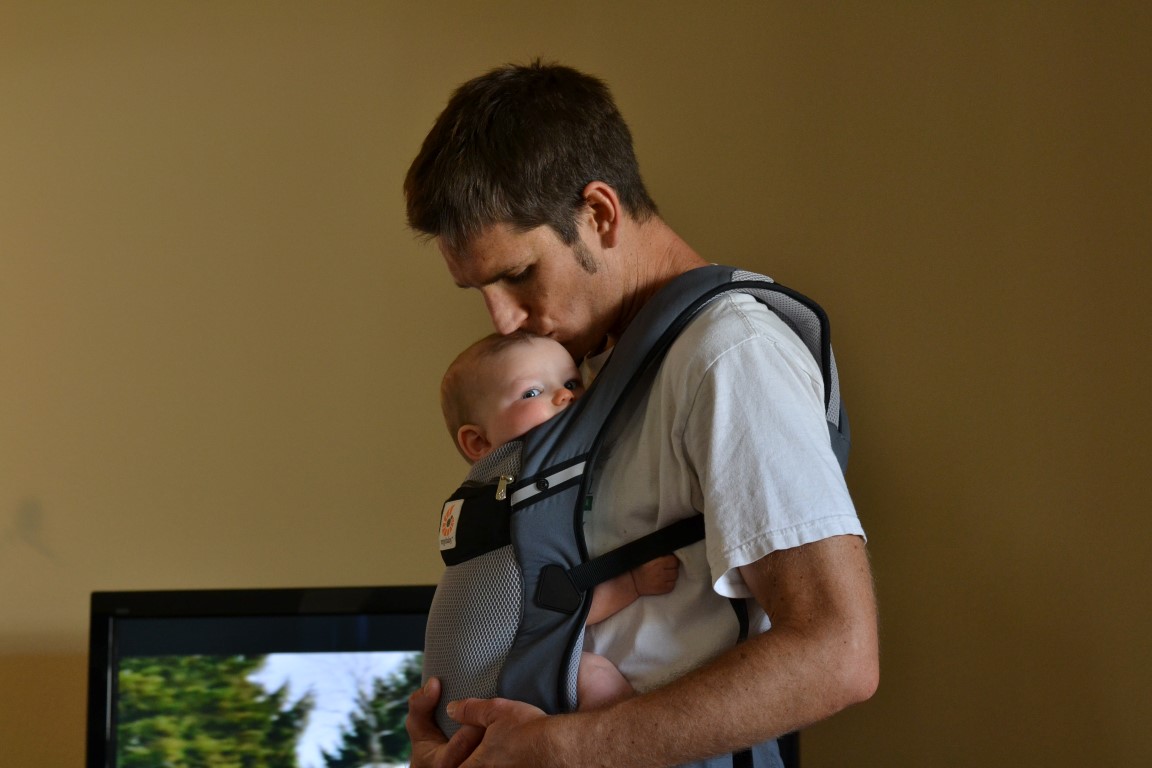If you’ve been reading my blog, you know that I love wearing my baby. I try to urge everyone to choose babywearing over alternative methods whenever possible. Check out my post on Why I Wear My Baby to get a better understanding of how important it is for parent and child and know my stance on the topic.
Being one who always wants to try everything, I was delighted when Ergobaby agreed to send me their new Ventus baby carrier from their Performance Collection to review. The Ventus is designed for the active parent who wants to comfortably take their child on adventures both around the city or hiking on trails. Adventures, baby, comfortable; all sound great to me!
I’ve had the pleasure of wearing Avery in an Ergobaby Original carrier and we both enjoyed the time spent with it on. But, when it gets hot outside which is guaranteed here in Texas, things can get sweaty, fast!

When the Ventus arrived, I immediately noticed the difference in overall look and feel from the Original.
The Ventus is lighter and less bulky with breathable, moisture-wicking fabric throughout. It only comes in one color, graphite, and is perfect for a gender neutral carrier.
The Ventus offers 3 carry positions (front, back, and hip), but I’ve only worn Avery in front so far. Once she’s a little older and sitting up on her own, I will feel better about trying her in the back position.
Putting the carrier on was fairly easy, and if you’ve ever used a soft-structured carrier before, this will be no problem. The straps are pretty thick and proved slightly difficult to adjust which is annoying when you have a squirmy baby to hold on to at the same time. But, those thick straps also help to limit slippage and the need to re-tighten after a while, so I’m okay with the straps.
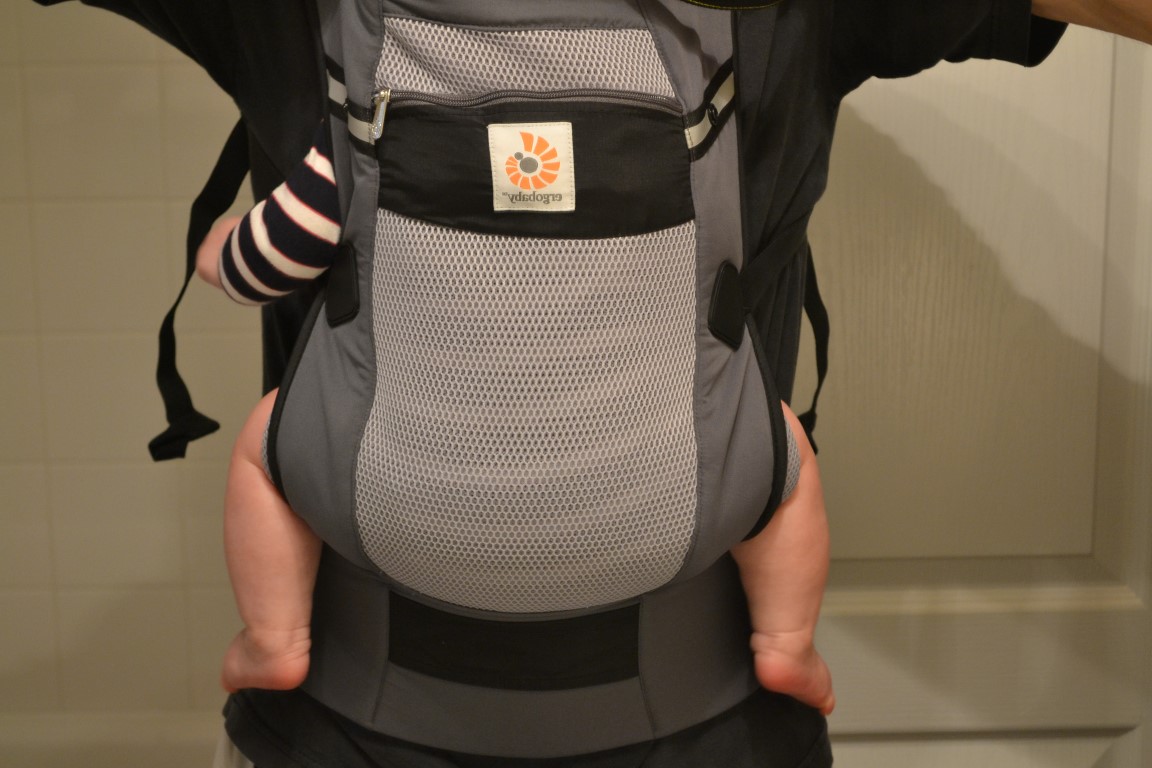
I truly appreciate the ability to move the chest strap up and down to get the right fit, and reaching behind my head to connect it was pretty easy. Actually getting the clips connected is hard at times; I just have an issue with how they are shaped and feeling my way to connect them. It’s not always, but just a minor thing to note.
Our first walk in the Ergobaby Ventus was over an hour and Avery slept most of the time while I was able to comfortably move at a brisk pace. Avery felt secure and snug against me the entire time and we both kept rather cool despite the heat and humidity that day.

If you are looking for a baby carrier, a small but very important thing to look for is a built-in hood. The Ventus has one and it works great to block everything from wind, dust, sun, and noise when I’m walking and trying to let her nap.
Once it is adjusted to fit Avery and me, the lightweight structure feels great all around except one area. The straps wrapping around me under my arms rub and put pressure on my shoulder blades. This only happens when I’m on a walk and I don’t notice it when moving around a store, but I walk a lot!
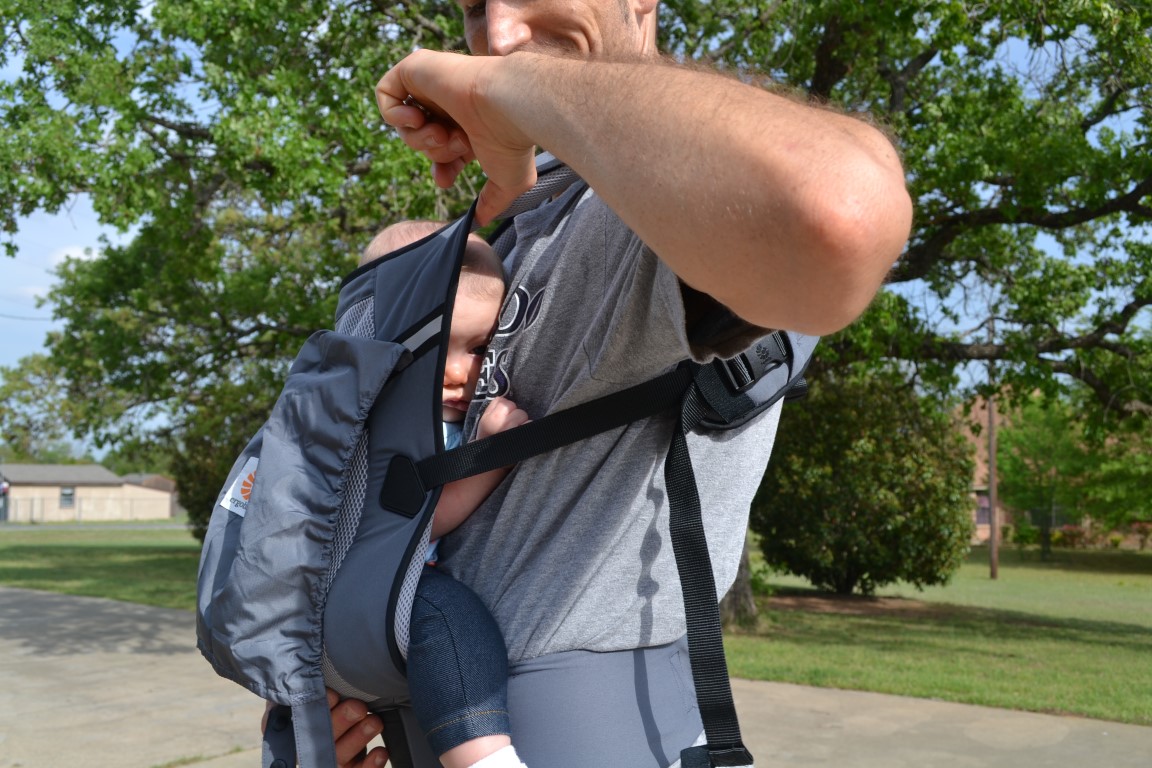
Again, the rubbing comes and goes and doesn’t stop me from using the carrier since it really is a great option for us both. Going Mom even enjoys wearing Avery in the Ventus and we even argue over who is going to use it when we’re together. But, Going Mom, as usual, wins.
That’s okay though, I love seeing my two girls together and know how much Kelley misses Avery when she’s at work; they both put a permanent smile on my face.
Part of what makes the Ventus so light is the absence of the bells and whistles like other carriers. You get a zippered pocket that conceals the hood and that’s it. To me, this is good and bad. If I were to go hiking in the Ventus, I would want some sort of storage compartment.
In our Onya Outback, it is heavier, but it has several pockets to store necessities which always comes in handy for me. So for going on an outdoor adventure, I’d prefer the Onya.
But if you have other places to store your necessities, the Ventus is a great choice with its breathable, lightweight material. I’ve actually started keeping it in my car so it’s always on hand when I bring Avery to the store. Plus, I know she likes that she can already stick her head over the top without an infant insert.
And it’s the perfect spot for her to chew and soothe those sore gums.
I have only tried a few soft-structured baby carriers thus far, but the Ergobaby Ventus is an overall great carrier for the active parent just as it claims. Since it is made to carry babies weighing anywhere from 7 to 45 pounds, it will last years as your baby grows with no need to upgrade.
Being lighter, Going Mom enjoys wearing this one more than our heavier Onya. I don’t mind the extra weight in trade for its storage space, but I would say the Ventus would be preferred by those with a smaller frame.
Here is the list of features on Ergobaby’s site:
Special
- Body Material/Shell: 100% Polyester
- Body Material/Mesh: 100% Polyester
- Lining Material: 100% Polyester
Standard
-
Comfortable for Parents: Baby’s weight is evenly distributed between the hips and shoulders
-
Ergonomic for Baby: Baby is cradled in a natural sitting position
-
3 Carry Positions: Front, Back and Hip
-
Baby Weight Range: 7*-45 lb/3.2* – 20 kg (*Newborn with Infant Insert)
-
Stitching: Reinforced at all fabric intersections for extra durability
-
Shoulder Strap Length Range: 24”-44” (61cm-112cm)
-
Waist belt Circumference Range: 29”-55” (74cm-140cm)
-
Shoulder Strap Padding:4mm EVA with 15mm High Density PU Foam
-
Hood
-
Machine washable
-
Designed in the USA
I have and will continue to enjoy using the Ventus with Avery and want to thank Ergobaby for the opportunity to use and review their carrier. As an active dad I want to get out and move with my baby to show her the world, and carriers made for this are awesome!
Check out Ergobaby on Twitter, Facebook, and Pinterest and send them some babywearing love!
Disclosure: Ergobaby sent me their Ventus Carrier free of charge, but all thoughts and opinions are strictly my own. I did not receive compensation for this post.
